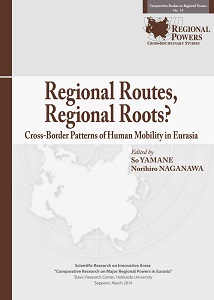Social Implications of Two Hindu Pilgrimages in Maharashtra
Social Implications of Two Hindu Pilgrimages in Maharashtra
Author(s): Chihiro Koiso
Subject(s): Customs / Folklore, Sociology of Culture, Sociology of Religion, Identity of Collectives
Published by: Hokkaido Slavic-Eurasian Reserarch Center
Summary/Abstract: There are two well-known pilgrimages in the state of Maharashtra, western India. One is the Pandharpur, held at fixed times, and the other is the Aṣtavināyaka (eight Gaṇeśa). The former is comparatively arduous and regimented, while the latter is more personal and pleasure oriented. Maharashtra has eight temples sacred to Gaṇeśa (collectively known as the astavinayaka), all located within a hundred-kilometre radius of the city of Pune. The aṣtavināyaka is a popular pilgrimage comprising a visit to all eight of these Gaṇeśa temples. Attracting many pilgrims, both pilgrimages contribute to the regional identity of Maharashtra. This paper shows that these two Hindu pilgrimages in Maharashtra are useful examples to help better understand the role of pilgrimage in modern India.
Book: Regional Routes, Regional Roots? Cross-Border. Patterns of Human Mobility in Eurasia
- Page Range: 99-109
- Page Count: 11
- Publication Year: 2017
- Language: English
- Content File-PDF

